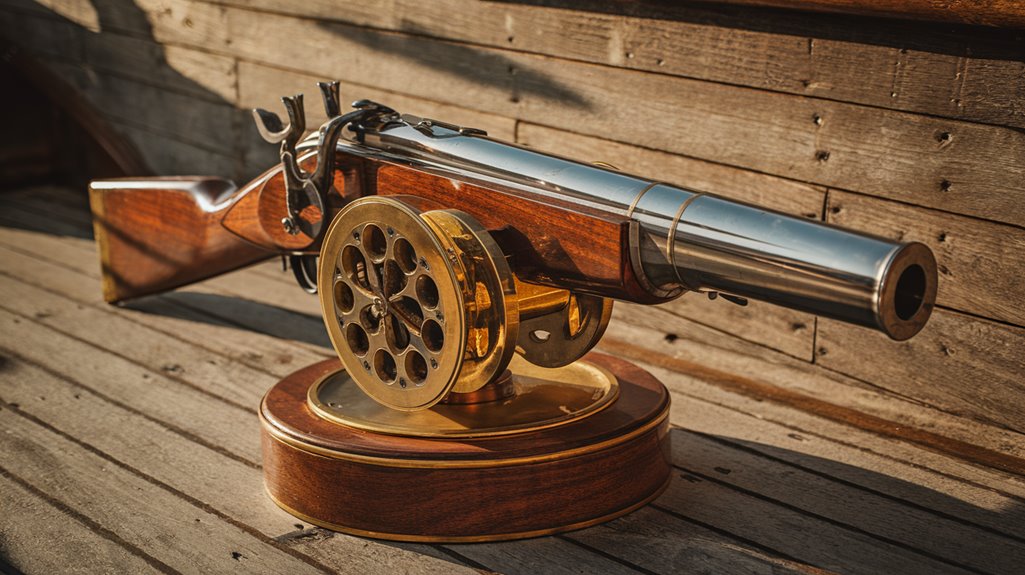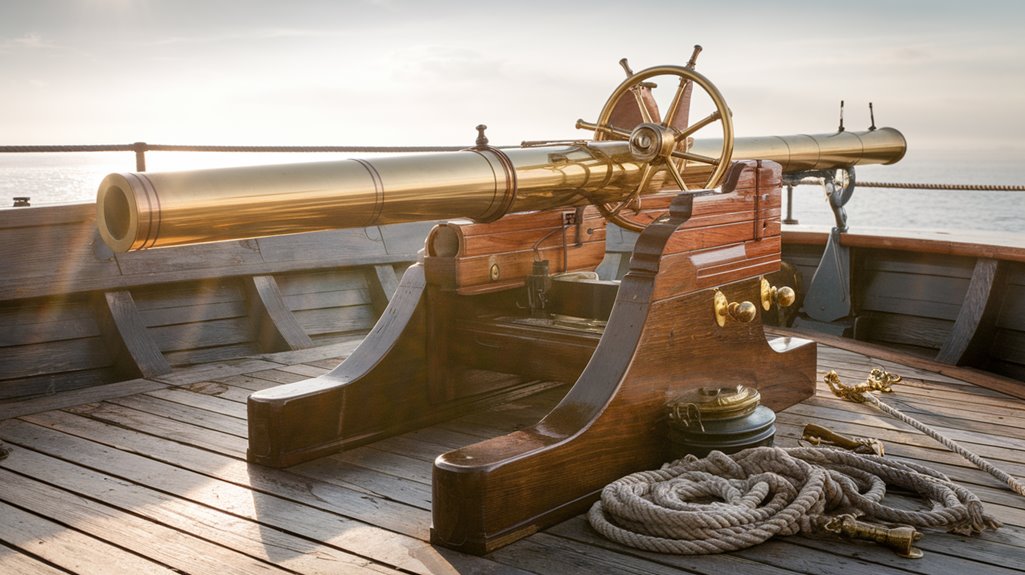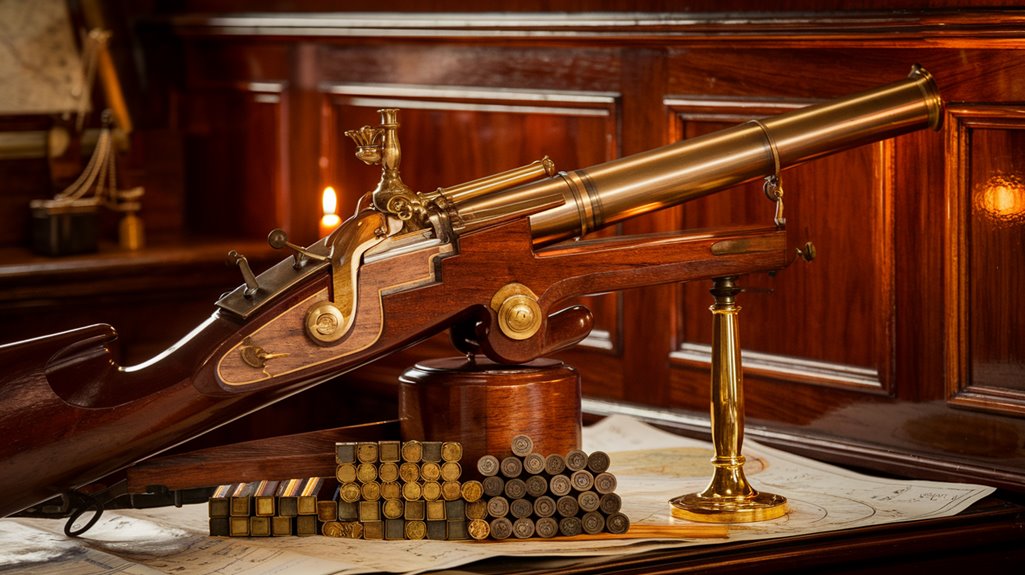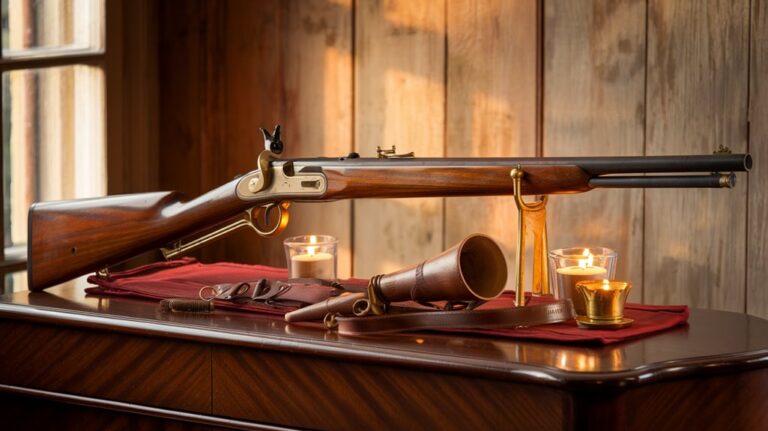The Puckle Gun: The Odd Square-Bullet Weapon
You've heard of round bullets, you've heard of silver bullets, but you've probably never heard of square bullets. Yet in 1717, British inventor James Puckle created a weapon that could fire both. His revolutionary "defence gun" wasn't just remarkable for its unusual ammunition – it was one of the first attempts at creating a rapid-fire weapon system. While it didn't succeed commercially, the story behind this peculiar firearm reveals fascinating insights into early 18th-century military innovation and religious prejudice.
The Birth of an Early Machine Gun

While many consider the Gatling Gun the first machine gun, the Puckle Gun emerged nearly 150 years earlier as a groundbreaking attempt at rapid-fire weaponry. In 1717, British inventor James Puckle created this innovative defense weapon, marking significant mechanical advancements in firearms technology. Using a revolutionary matchlock-type mechanism, the gun represented cutting-edge engineering for its era.
You'll find the Puckle Gun's design remarkably ahead of its time when making historical comparisons to conventional muskets. It featured a revolving cylinder that could hold up to 11 rounds and fire nine shots per minute – a revolutionary feat for the early 18th century. The weapon was specifically engineered to help the Royal Navy combat Ottoman pirates at sea.
Though it encountered setbacks during trials at Woolwich and failed to gain widespread adoption, the gun's influence on future weapon development is undeniable. Despite production challenges and reliability issues, it laid the groundwork for modern rapid-fire weapons, even if only a few units were ever manufactured.
Square vs. Round: A Tale of Two Bullets
Two distinct ammunition types defined the Puckle Gun's unique legacy: traditional round bullets and their controversial square counterparts.
You'll find that bullet design played a vital role in the weapon's performance, with round bullets demonstrating superior aerodynamics and predictable flight paths. In contrast, square bullets exhibited erratic trajectories due to their unconventional shape and the gun's unrifled barrel. Round bullets benefited from their higher ballistic efficiency compared to their square counterparts. Similar to modern deformation bullets, round ammunition offered better mass stability upon impact.
While military applications were intended for both ammunition types, the square bullets proved problematic in practice.
You'd notice that round bullets consistently outperformed their square counterparts, offering better penetration and reliability. The square bullet chambers, though innovative, ultimately highlighted the design's limitations.
This stark difference in performance helps explain why round bullets became the standard in firearms development, while square bullets remained a curious historical footnote in weapons engineering.
Technical Marvels and Design Features
Beyond its unique ammunition types, the Puckle Gun showcased remarkable engineering for its era through innovative mechanical features.
You'll find mechanical innovation in its manually operated revolving cylinder, which could hold between 6 to 11 shots. The gun's firing efficiency stemmed from its clever slot and stud mechanism that guaranteed perfect chamber alignment with the barrel. Mounted on a folding tripod mount, the gun provided stability and adjustable aim for shipboard defense.
The weapon's 3-foot barrel connected to a cylinder you could detach by unscrewing the crank handle. When you turned the crank, it created a gas-tight seal by locking the tapered chamber end into the barrel.
For quick reloading, you could swap out the entire cylinder with a pre-loaded one, while the long trigger lever at waist height made firing more comfortable. The advanced design achieved an impressive nine rounds per minute firing rate.
Naval Defense Against Ottoman Pirates
During the early 18th century, the Ottoman Empire's formidable presence in the Mediterranean posed a significant threat to European maritime trade. The gun's flintlock mechanism proved unreliable in military trials.
The Puckle gun emerged as an innovative solution to counter Ottoman pirate warfare, addressing the limitations of traditional naval tactics that relied on slow-firing broadside cannons. The weapon demonstrated remarkable efficiency by firing 63 shots in seven minutes during testing.
You'll find these key challenges that the Puckle gun aimed to solve:
- British ships couldn't effectively target swift Ottoman boats with standard cannons.
- Traditional muskets only managed three shots per minute.
- Naval forces needed rapid-response weapons for close-range encounters.
- Existing weapons lacked the versatility for quick-moving targets.
The gun's impressive firing rate of nine shots per minute and its ability to fire both round and square bullets made it a potentially game-changing weapon against agile pirate vessels.
Though its complex design ultimately limited its adoption.
Historical Impact and Revolutionary Ideas

While the Puckle gun's practical application against Ottoman pirates fell short, its innovative design marked a turning point in weapons development. You'll find its historical significance lies not in its battlefield success, but in its revolutionary concepts that influenced future military innovation. The weapon's ability to fire 63 rounds in seven minutes during its 1722 demonstration showed its remarkable potential.
The gun was specifically engineered to provide defense against Ottomans during Mediterranean conflicts. Despite its flaws, you can trace modern rapid-fire weapon development back to this ambitious invention. Had the Puckle gun overcome its mechanical challenges, you'd likely have seen dramatic changes in 18th-century warfare tactics.
Its potential nine-round-per-minute firing rate could've transformed traditional battle formations and possibly introduced trench warfare a century earlier than World War I.
Even though the weapon failed to gain military adoption, its legacy lives on in the evolution of automatic weapons, proving that sometimes an invention's greatest impact lies in the ideas it spawns rather than its immediate success.










